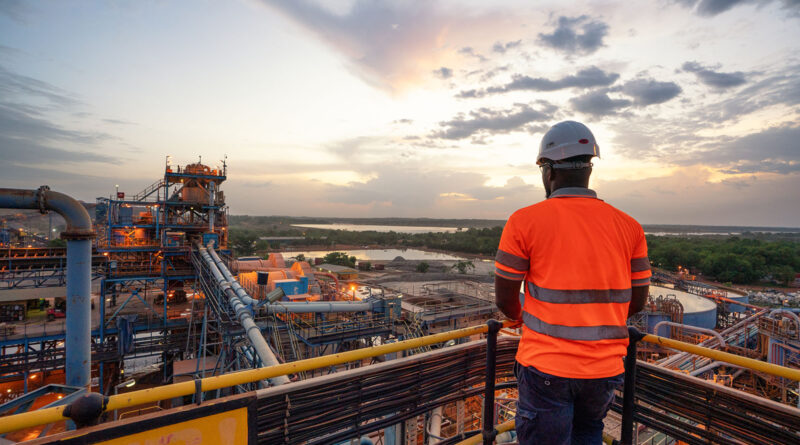South Africa’s mining GDP declined again in Q2
As was already evident in the high-frequency monthly data from Stats SA, real mining GDP declined for a second consecutive quarter during Q2. On top of a notable 1.7% quarter-on-quarter (q-o-q) decline in Q1 2024, mining GDP contracted by a further 0.8% during Q2. Mining was one of three sectors that went backwards in the quarter, the others being agriculture (-2.1% q-o-q) and transport (-2.2%). On a much more positive note, the absence of loadshedding was reflected in a 3.1% q-o-q increase for the electricity, gas and water sector.
In terms of overall real GDP, the economy performed better in Q2 after a weak Q1. Improved growth was expected given an entire quarter without loadshedding. Following zero growth in Q1, which was revised higher from an initial print of -0.1%, real GDP increased by 0.4% q-o-q in the second quarter. This was somewhat weaker than the Bloomberg consensus of 0.5%, but in line with our expectation.
When mining is excluded from total real GDP, the economy grew by 0.5% q-o-q in Q2. Relative to Q2 2023, the year-on-year (y-o-y) comparison showed that real mining GDP declined by 0.7% in Q2 2024. In contrast, non-mining GDP increased by 0.5% y-o-y in Q2. In the first half of 2024, there was no growth in mining GDP relative to the same period in 2023. Non-mining GDP increased by 0.6% y-o-y in the first six months of 2024. The mining numbers for the first half of the year continue to show a sector that is stabilising at a low level after real mining GDP contracted by 7.3% and 0.5% in 2022 and 2023 respectively.
In an environment of no power cuts, the question could be asked why the economy in general, and the mining sector in particular, did not perform better in Q2. Among other factors, this can be explained by the following:
- Weak fixed investment. In real terms, total fixed investment declined for the fourth quarter in a row. Investment by general government, state-owned enterprises and the private sector were all lower in Q2. On the private sector front, anecdotal evidence of a reduction in green energy investment amid no loadshedding may explain some of the weakness. Hesitancy before the end-May national election may also have been a factor. In the next 12 to 24 months, we expect that increased mining sector renewable investments will support the private capex numbers.
- Sustained poor port and rail performance. Real exports of goods and services decreased by 0.4% q-o-q in Q2. Stats SA attributed this to decreased trade in vegetable products, mineral products, vehicles and base metals.
Transnet has a target to increase total railed tonnages to 170 million tonnes in the 2024/25 financial year, up from 151.7 million tonnes in 2023/24. All else equal, if this is achieved, the export numbers should look better in coming quarters.
Mining profitability remained under pressure in Q2
As in the first quarter of 2024, the underperformance of the mining sector was also evident in Stats SA’s gross operating surplus (GOS) figures. Measured in nominal terms, these provide a broad measure of profitability in the major sectors of the economy. In the second quarter, the operating surplus for mining increased by a modest 0.3% y-o-y. Excluding mining, the GOS for the rest of the economy increased by 6.7% y-o-y. Relative to the non-mining sectors, this starkly illustrates the profitability squeeze in important subsectors of the mining sector. Amid depressed prices, this is most notable in platinum group metals (PGMs).
The one area where mining again outpaced the non-mining sectors was on compensation of employees. This increased by 5.4% y-o-y in Q2 for mining versus a lower rise of 4.7% in the rest of the economy. The rise in mining compensation of employees was somewhat above the 5.2% annual increase for headline consumer inflation (CPI) in Q2 2024.
Looking ahead
In an environment of low PGMs prices, continued logistical constraints, the absence of a functioning cadastre system, and concerns about the demand for commodities from China, growth in the mining sector should remain constrained in the rest of 2024. However, a more favourably domestic macroeconomic backdrop in the second half of the year should provide some support. This includes lower diesel costs, which have declined by almost R3/litre since March 2024, a lower rate of increase for general inflation, and the likely start of interest rate cuts in September. Along with post-election optimism about the government of national unity, these factors should support business and consumer confidence in future. On that note, in a somewhat disappointing release, the RMB/BER business confidence index (BCI) increased by just 3 points to a still depressed level of 38 in Q3 2024, from 35 in the second quarter. Higher levels of confidence are a prerequisite for faster rates of real GDP growth (see Figure 1 below). At this stage, we continue to expect real GDP growth of around 1% for 2024, up somewhat from 0.7% in 2023.




